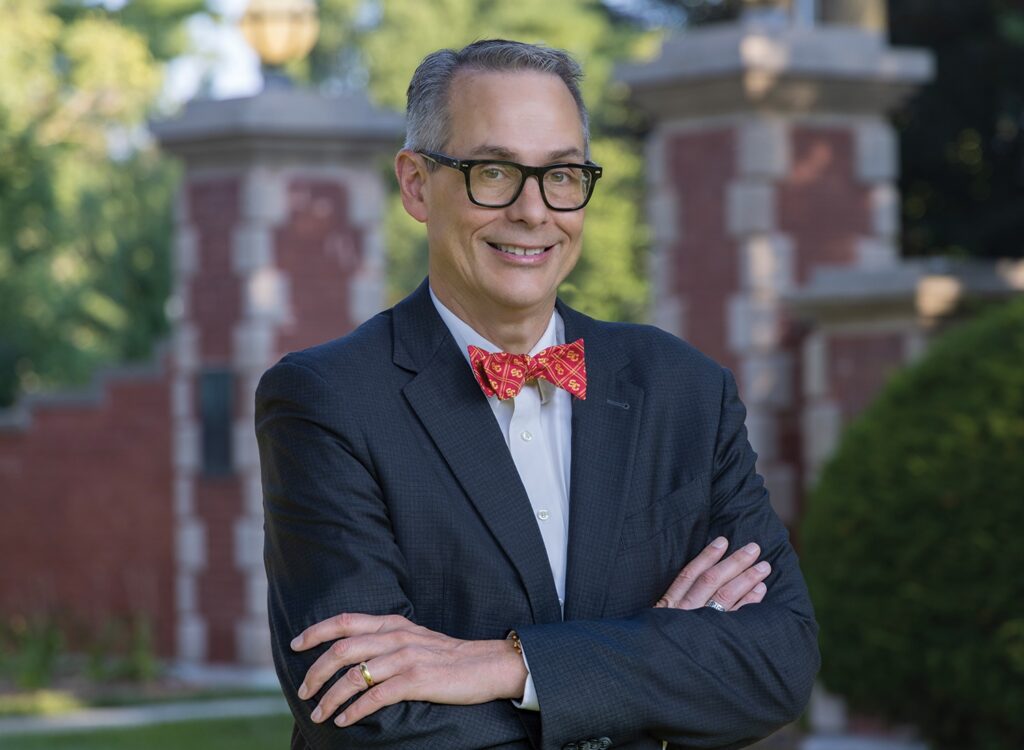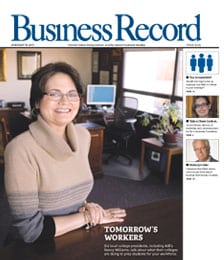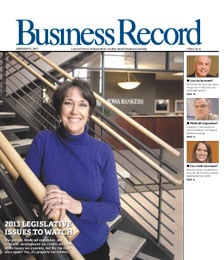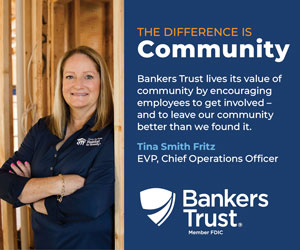Do media images of Iowa reflect reality

A recent cartoon by The Denver Post’s Mike Keefe depicted an Uncle Sam-type character asking a crowd of individuals, “OK, which states want to take part in the democratic process of selecting our nation’s leaders?”
In the cartoon, every hand in the crowd was raised. But looming over the group – suggesting their voices were more powerful – were two giant figures: a man dressed in a plaid shirt and overalls and wearing a straw hat with an “Iowa” name tag on his chest and another man dressed in bulky warm clothes, including mittens, with “New Hampshire” written on the front of his jacket.
The cartoon, which was reprinted in the Jan. 4 edition of the New York Times as part of its national syndication, is just one example of the thousands of words and images flowing from Iowa to the rest of the world as hundreds of reporters and camera crews comb through the state in advance of the Jan. 19 precinct caucuses.
It’s impossible to survey all the coverage, but a question arises as to how the national press is depicting the state. Is Iowa being portrayed as a state full of farmers, big meals, acres of corn and hogs, and little else? Or are journalists noticing that the state’s economy and its social fabric are slowly becoming more urbanized as manufacturing, financial services and other non-agricultural industries grow in importance? Is there room for complex images of the state in a campaign in which nine candidates make coverage of their issues and events complex enough?
“There is always the tendency by the candidates and the press to focus on corn and cattle,” said Candy Crowley, a Washington, D.C.-based senior political correspondent for Cable News Network who lived in Des Moines in the late 1970s and early 1980s. “And to a certain extent, it misses all of the changes that have happened in the economy; the growth of the insurance industry and the high tech.”
Reporters and editors said they are spending less time this year than in prior election cycles touring the state to compile profiles of average Iowans. They cite as reasons a combination of the unusually large number of candidates and the primary season itself, which has grown shorter.
“I think there’s more coverage now of the candidates, and it’s on a deeper level than it ever has been,” said Amy Walters, a political analyst at Washington, D.C.-based Cook Political Report. “There are print reporters who have settled in the state. And instead of dropping in next week, they’ve been there on and off since the summer. I think that this is a deeper look at the caucuses than anybody has seen.”
There is also the fact that the 2004 caucus coverage will focus only on the Democrats because Republican incumbent President George Bush is running for a second term.
“There’s no real reason to run a profile of the state when it’s only one side,” said Ken Cooper, national editor of The Boston Globe, which has six reporters working in Iowa now. When agrarian pictures are shown, reporters and editors said they are often the result of photo opportunities arranged by the candidates themselves, who strive for the wholesome image they believe can be conferred on them by associating with rural Iowa.
That happened in August when the campaign for Sen. John Kerry hauled in hundreds of bales of hay to the corner of 15th and Locust streets, transforming the very urban-looking display lot of a former car dealership, Dave Ostrem Imports, into a scene resembling a county barbecue. Representatives from the Kerry campaign didn’t return phone calls seeking comment.
“It’s that image, to be quite frank, that the candidates want to rub shoulders with,” said Susan Ramsey, a spokeswoman for the Greater Des Moines Partnership, which works to promote economic development in Central Iowa. Presenting the image of Des Moines as an urban center “is less of a challenge with the media than it is the campaigns. The media will go where the campaigns lead them.”
Journalists also cite the fact that in the primary race as a whole, Iowa becomes the platform where candidates to discuss issues that are important to rural voters everywhere. “Farm subsidies, the ethanol issue, those are the things that aren’t talked about in other states,” said Keefe. Those issues have been pick up on by the Globe, as well, Cooper said.
“Most of the imagery has referenced the demographics of the state, the large percentage of elderly and the interest in Medicare, Social Security, health care and prescription drug coverage,” he said. “We’ve written about ethanol and its importance to the state as an economic issue. Issues and demographics have been more prominent than pastoral scenes.”
For the first time, the Partnership is working to influence the images of the state that media organizations project. It hosted a debate between six of the candidates last week that was moderated by National Public Radio at its headquarters at the corner of Seventh and Locust streets and has promoted its Web site, www.desmoinesmetro.com, and its “Change Your View” promotional campaign.
In the days leading up to the NPR debate and at the event itself, Partnership representatives handed out close to 1,000 packets of information about the city to journalists, visitors and campaign staffers that included everything from maps to coupons for drinks at the upscale Cosmopolitan Lounge at the Suites at 800 Locust. The packets also contained brochures about cultural events taking place, including “Les Miserables,” which opened last weekend at the Civic Center of Greater Des Moines.
“Our project this year is on a much broader scale than anything we’ve ever done before,” Ramsey said. One of the first actions the Partnership took in the project happened about a year ago, when Des Moines Register columnist David Yepson pointed out that the background of a local studio used for live television broadcasts from Des Moines featured a plain blue curtain, Ramsey said. The curtain was soon replaced with a large picture depicting downtown Des Moines commissioned from Screenscape Studios.
“We have a great deal of respect for our agrarian roots,” Ramsey said. “It’s not that we’re dismissing that. We want to make sure that people outside our state and outside the Midwest have a realistic picture of what Iowa is. We have seven very strong urban centers here. We just want to make sure that as people are talking about Des Moines, it’s Des Moines they’re seeing.”
The Partnership has been preparing for the media influx in other ways, too. Anticipating that journalists will ask for so-called average Iowans to interview, the Partnership staff compiled a list of about 300 residents of Greater Des Moines, mostly young professionals and government workers, who volunteered to be interviewed by the press if the need arises, Ramsey said. Time will tell if the effort is ultimately successful, but there is some anecdotal evidence that the Partnership’s image-building campaign is working. At the end of last summer, Ramsey helped Fast Company magazine reporter Alison Overholt find information about the city and officials to speak with and gave her tours of Greater Des Moines. As a result of those efforts, among others, Fast Company named Des Moines “The Hippest City in the USA” in its October issue.
“If they [reporters] have a good experience, Des Moines will come off looking better,” Ramsey said.







